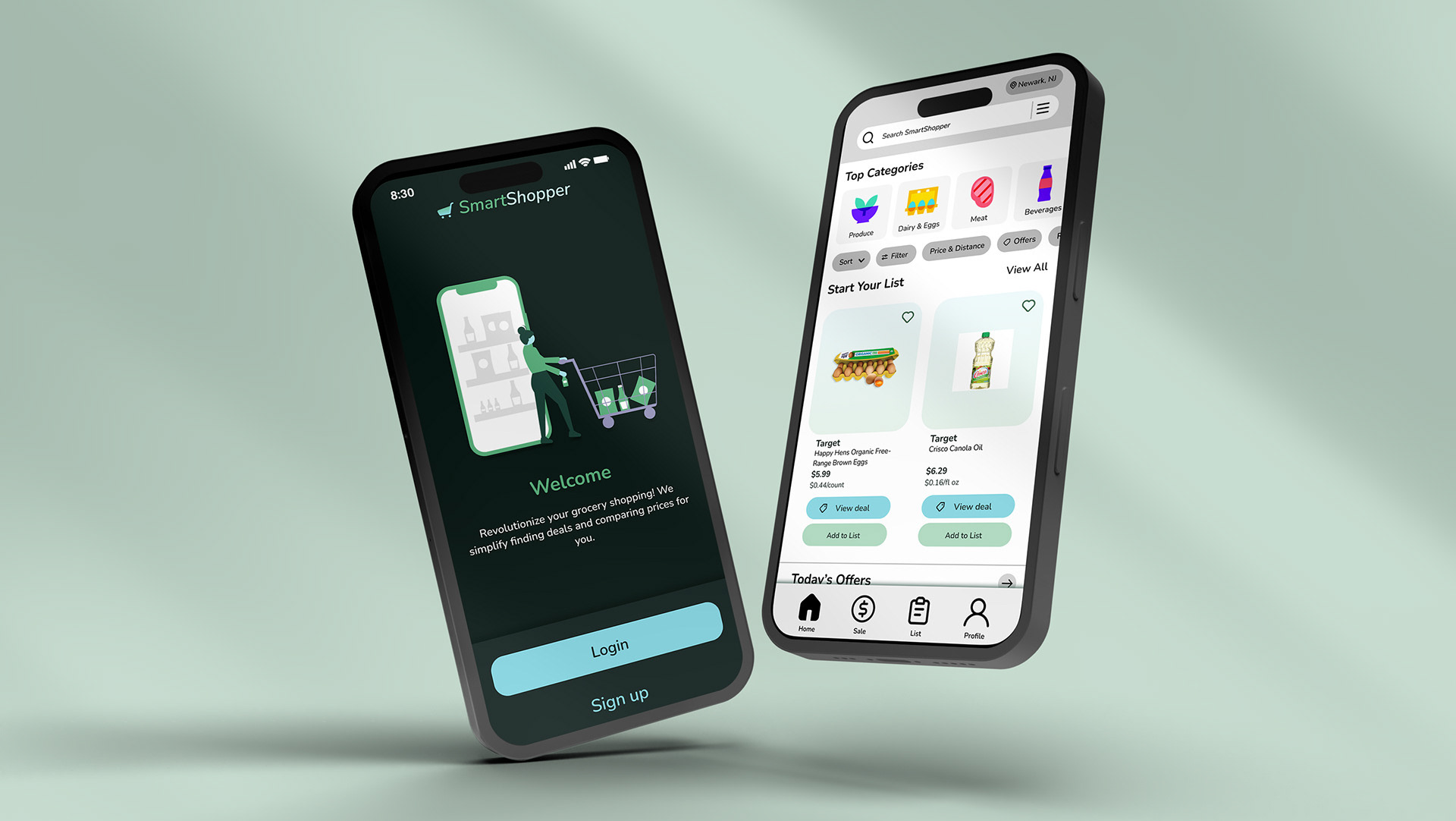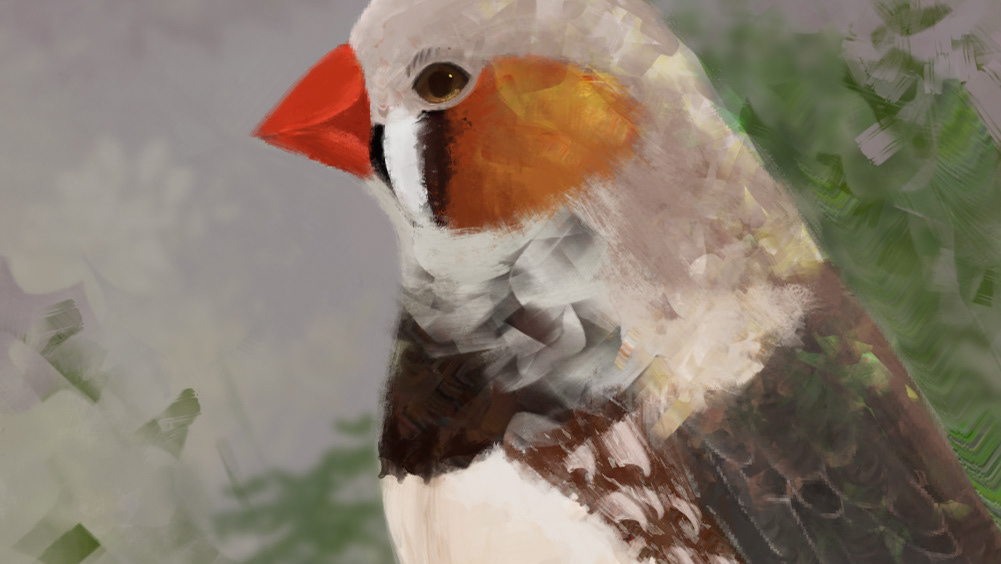Description of “Cute, cute, and cute”
This study explores how individuals define and perceive "cuteness" of Blind box figurines, and understanding what are the quantitative and qualitative measures of ‘cuteness’ using images of ‘blind boxes’ figures.
• Section 1 Research Question: What features go into account when rating an object’s cuteness?
• Section 2 Research Question: How does perception of cuteness vary from person to person?
• Section 3 Research Question: Which figurines are the most and least universally perceived as cute?
Participants evaluated various figurines, reflecting on tactile features (soft, squishy), visual design, emotional resonance, and personal associations to determine what makes certain objects "cute."
Rationale
Our study was inspired by my sister who thought Sonny Angels are adorable, which raised questions about the influences behind people's perception of cuteness.
And a business proposition;use this study to design figurine sets that appeal to a broader audience by incorporating the most appealing characteristics identified in participant feedback.
Methodology
Conducted a card sorting study with about 20 participants using a hybrid approach (physical and virtual via FigJam) to analyze information.
Recruited participants through IS375 Discord server and Snowball Sampling Method to ensure diverse perspectives.
Conducted follow-up mini interviews with each participants to gain deeper insights into their sorting decisions.
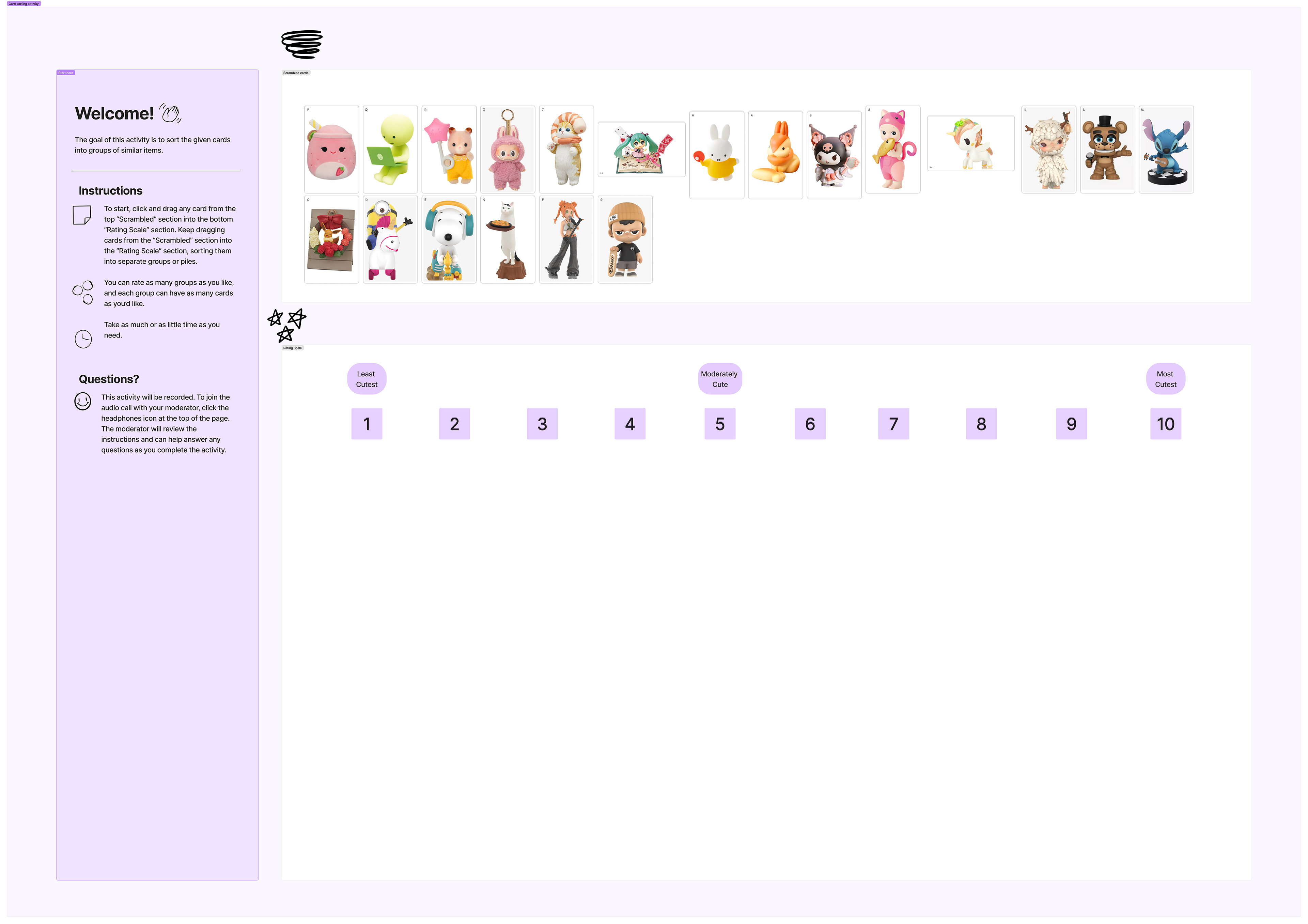
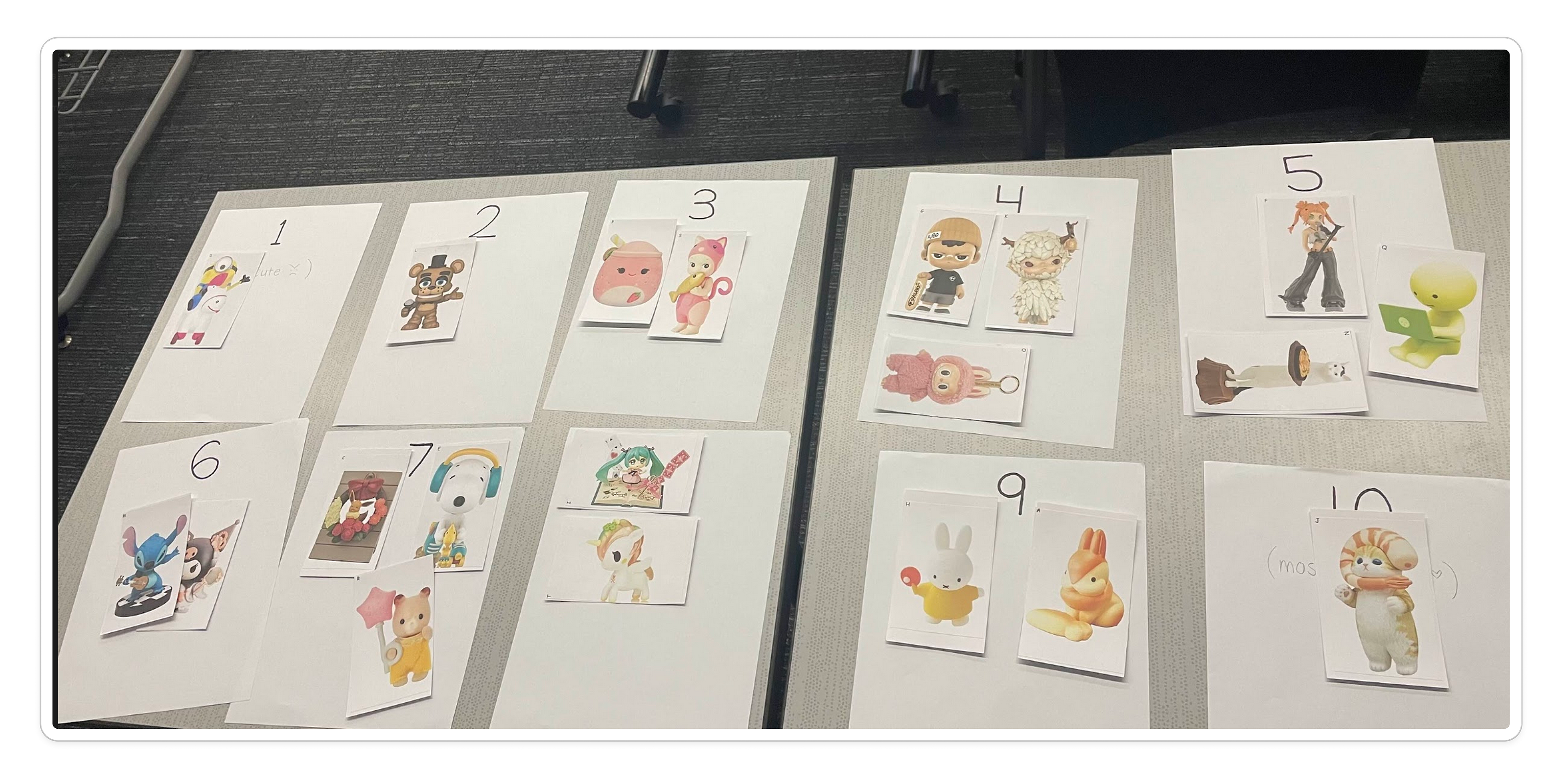
Findings
Many participants have different definitions of what they think is “cute.” Characteristics, expressions, and color of the figurines all shaped the decisions. Tactile features such as softness, fluffiness, and the desire to hug or squish the object. Several participants noted humor or a sense of innocence in an object's design.
Certain characters based off the media they came from dictate the decisions of certain ratings (Freddy Fazbear and Stitch being the most prominent examples). Freddy Fazbear was our most polarizing card with a standard deviation of 3.28, highlighting variability in participants opinions.
Visual Artifacts
Our team conceptualized a blind box figure series, "Funni Friends," beginning with the initial character, Chubbi.
We created a mood board as reference, and expanded the concept to include additional animal-inspired characters, a cat and a do, ensuring the product line reflected participants preferences.
I contributed by designing the packaging mock-up for the figurine series, utilizing Adobe Illustrator and Adobe Photoshop to create a visually appealing and market-ready presentation.
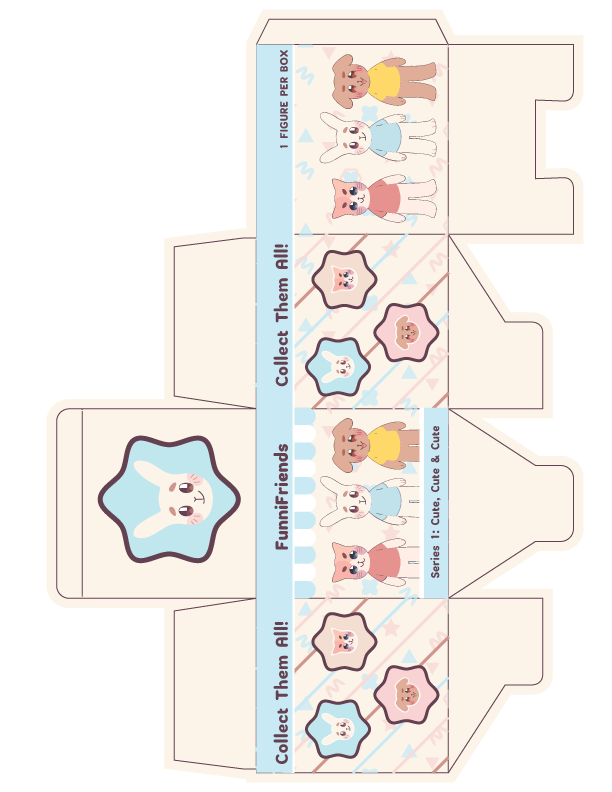
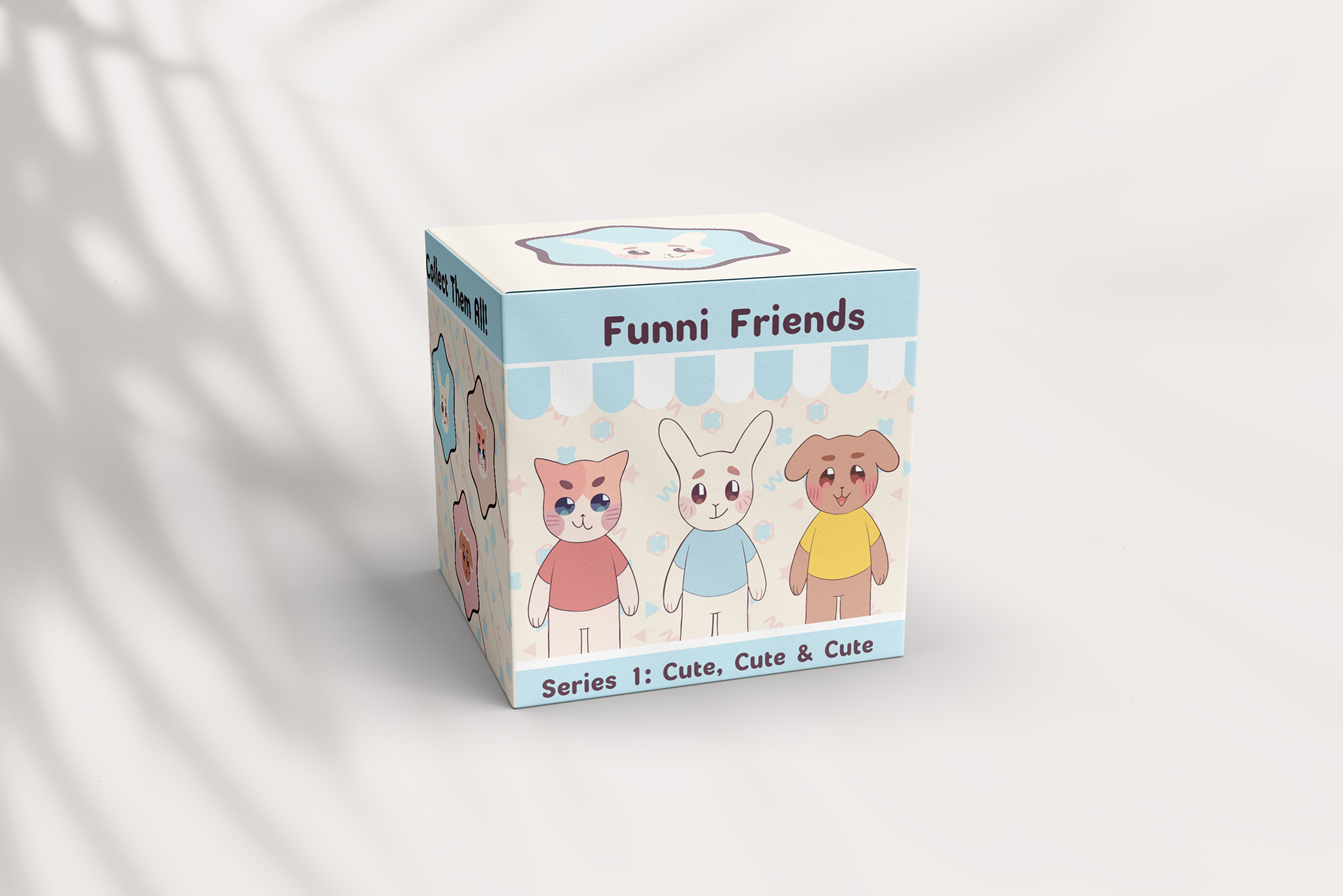
Reflection
Working on Cute, Cute, and Cute was a challenging yet enjoyable experience. We had about 3 weeks to complete the project, and throughout the process, I constantly worried about the time-frame and whether we would finish on time. Time management was always on my mind, which added some pressure to the project.
One of the most enjoyable aspects was diving deeper into UX research, particularly conducting interviews using the card sorting method. It was fascinating to see how different people perceive "cute" in their own unique ways. Collaborating with my group and engaging with our participants made the process even more exciting, as I got to learn from their perspective while refining my research skills.
Overall, despite the time constraints, I found the experience rewarding. It not only helped me improve my UX research skills but also reinforced the importance of collaboration and understanding diverse viewpoints in design.
